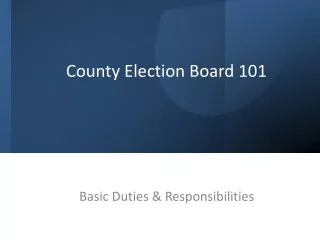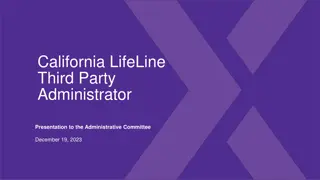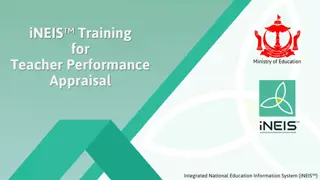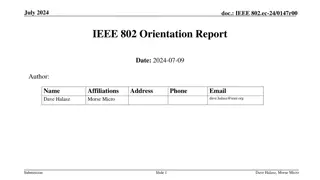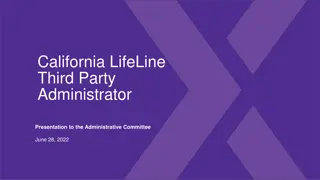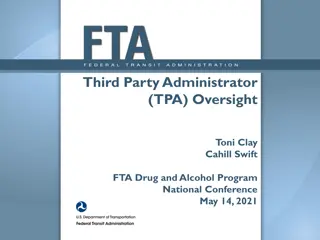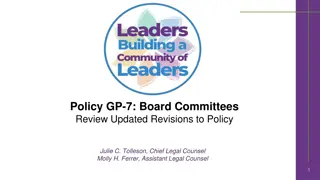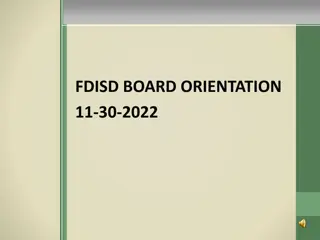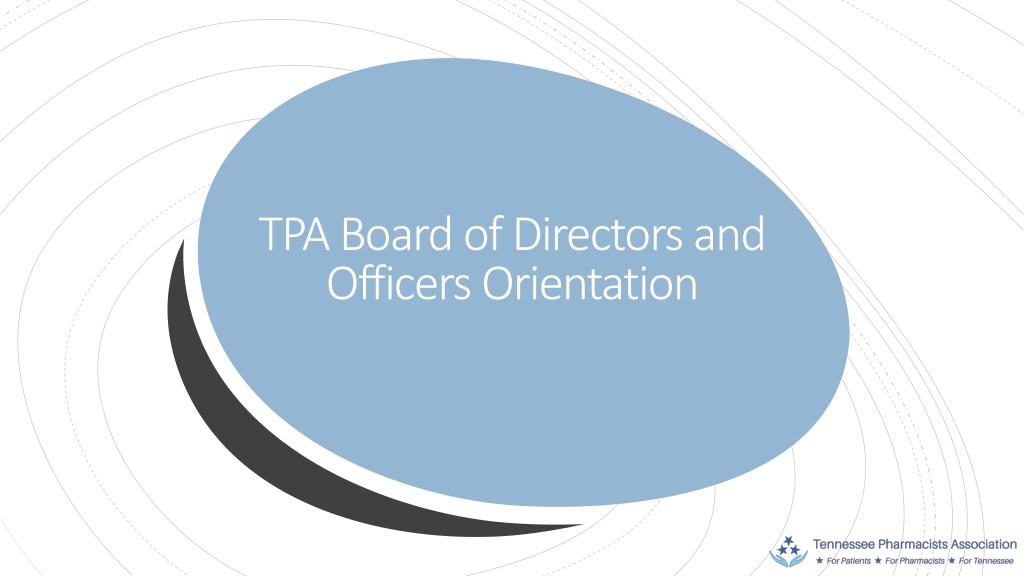
Tennessee Pharmacists Association and Board of Directors Overview
Explore the roles and responsibilities of the Tennessee Pharmacists Association Board of Directors and Officers, including governance, leadership functions, legal corporate status, and associated entities like PharmPAC and TPPF. Learn about nonprofit designations, structure, and the organization's mission within the pharmacy industry.
Download Presentation

Please find below an Image/Link to download the presentation.
The content on the website is provided AS IS for your information and personal use only. It may not be sold, licensed, or shared on other websites without obtaining consent from the author. Download presentation by click this link. If you encounter any issues during the download, it is possible that the publisher has removed the file from their server.
E N D
Presentation Transcript
TPA Board of Directors and Officers Orientation
The Board leads the association. The President leads the Board. The CEO runs the association. The Board governs the staff manages Leadership Responsible for the direction of the organization Leadership and Management Four primary functions of leadership: Governs Policy and Position Development Visionary future focused Fiduciary Management Responsible for the administration of the organization Partners of the Board to carry out the mission and vision as well as daily administrative needs unique to nonprofit organizations. Information adapted from Board Responsibilities - Bob Harris, CAE
Legal corporate status of an organization Sometimes referred to as Nonprofit Exempt Organization IRS designation exempting the organization from paying most federal income taxes (except UBIT) What is a Not- For-Profit? IRS 501(c)3 religious, charitable, scientific, or educational purpose. IRS 501(c)6 trade association, business league, or professional society Information adapted from Board Responsibilities - Bob Harris, CAE
Tennessee Pharmacists Association Tennessee Pharmacists Association 501(c)6 Tennessee Compounding Pharmacists Society (TCPS) Tennessee Society of Chain Pharmacists (TSCP) Tennessee Society of Health-System Pharmacists (TSHP) Tennessee Society of Independent Pharmacists (TSIP) Tennessee Society of Long-Term Care Pharmacists (TSLTCP) Tennessee Society of Pharmacists (TSP) Tennessee Society of Student Pharmacists (TSSP) Tennessee Society of Pharmacy Technicians (TSPT) Tennessee Pharmacists Research and Education Foundation (501(c)3) 501(c)3 Tennessee Pharmacists Consortium for Education (TPCE)
Within TPA Tennessee Pharmacists Political Action Committee (PharmPAC) Pharmacy Practice Preservation Fund (PPPF) Tennessee Pharmacy Recovery Network (TPRN) Tripartite Committee TPA Executive Committee Deans from 6 schools and colleges of pharmacy Tennessee Board of Pharmacy Other Entities Outside TPA District Pharmacy Associations Tennessee Board of Pharmacy National organizations (APhA, ASHP, NCPA, ASCP, NASPA, AMCP) Information adapted from Board Responsibilities - Bob Harris, CAE
Mission driven Member Focused Accountable and follow through for your commitment Uphold governing documents and expectations Characteristics of High Performing Boards Determine to be successful Work as a team Value and build relationships and respect diversity Focus on outcomes and the impact the organization can have Information adapted from Board Responsibilities - Bob Harris, CAE
Prepare for Board meetings Respect the President, Agenda, and Rules of Order Bring a calendar (start and end on time) Know the mission and goals Characteristics of High Performing Boards Listen more than you speak Check personal and political agendas at the door Respect confidentiality You don t speak for the organization without authority Support the Board Information adapted from Board Responsibilities - Bob Harris, CAE
Increased scrutiny of boards of directors in response to corporate scandals Boards are expected to maintain their accountability, independence, and transparency while governing IRS 990 Requirements Good governance policies: Audit and Audit Committee, Whistleblower, Compensation, Document Destruction, Conflict of Interest, Public Records Sarbanes Oxley Information adapted from Board Responsibilities - Bob Harris, CAE
Directors and Officers (D&O) Liability General Liability Insurance Fidelity Bond Meeting Cancellation Information adapted from Board Responsibilities - Bob Harris, CAE
Duty of Care requires leaders to use reasonable care and good judgement in making the decisions on behalf of the interests of the organization Three Primary Duties of the Board Duty of Loyalty requires leaders to be faithful to the organization, avoiding conflicts of interest Duty of Obedience requires leaders to comply with governing documents (i.e. by-laws, constitution, articles of incorporation) Information adapted from Board Responsibilities - Bob Harris, CAE
Agenda Voting Motions Rules of Order Calling the Question Second Tabling Amendments Information adapted from Board Responsibilities - Bob Harris, CAE
Formal: Standing Committees (as required in by-laws) Ad hoc Committees (formed for specific needs or the completion of a task then disbanded) Committees Informal: Workgroups, task forces, think tanks, etc. (informal, narrowly focused) are Framers, Implementers, Advocates, and Thinkers but ultimately are Recommenders. Information adapted from Board Responsibilities - Bob Harris, CAE
Environmental scan SWOT analysis Mission Vision Values Goals Strategies Action Steps Plan Champion Roadmap for organizational mission and goals over the next 3-5 years Strategic Planning Information adapted from Board Responsibilities - Bob Harris, CAE
Protect the organization IRS 990: Must be available for the past 3 years Risk Antitrust Violations Management Apparent Authority Financial Audits Conflicts of Interest Information adapted from Board Responsibilities - Bob Harris, CAE
Guidebook for Tennessee Nonprofits
Task Three Primary Components of Board Leadership Team Tools Information adapted from State Pharmacy Association Governance R. Scott Brunner, CAE Presented at 2017 NASPA Leadership Meeting
Three key directional documents: Mission and Bylaws: Who we are Task Policies and Values: How we do what we do Strategic Plan and Vision: Where we are going What Do We Need To Do? Information adapted from State Pharmacy Association Governance R. Scott Brunner, CAE Presented at 2017 NASPA Leadership Meeting
Clear, elevating goal Results-driven structure Competent members Unified commitment Team Collaborative climate Standards of excellence External support and recognition Principled leadership Elements of an Effective Team Information adapted from State Pharmacy Association Governance R. Scott Brunner, CAE Presented at 2017 NASPA Leadership Meeting
Strengths and weaknesses Seek advice and engage others Shop and sell your ideas Team Embrace diverse perspectives Develop future leaders Preparing and Leading Information adapted from State Pharmacy Association Governance R. Scott Brunner, CAE Presented at 2017 NASPA Leadership Meeting
Set organization direction Ensure necessary resources Team Provide oversight Legal Roles and Responsibilities Information adapted from State Pharmacy Association Governance R. Scott Brunner, CAE Presented at 2017 NASPA Leadership Meeting
Advisors, allies, and partners of the President and CEO Independent thinkers and sound decision makers Advocates and buffers Team Role models and symbols Designers and managers Effective Board Members Information adapted from State Pharmacy Association Governance R. Scott Brunner, CAE Presented at 2017 NASPA Leadership Meeting
Establish strategic direction Approve annual budget Establish dues Determine public policy positions Approve (and adhere to) operational policies Team Authorize entry into contractual relationships Monitor strategic progress Hold CEO accountable Provide oversight Essential Board Functions Information adapted from State Pharmacy Association Governance R. Scott Brunner, CAE Presented at 2017 NASPA Leadership Meeting
The 4 Cs: Communication Collaboration Consensus Concision Tools Agenda and Minutes: The agenda is what you discussed The minutes are what you did How will we do it? The minutes and the agenda are companion documents Information adapted from State Pharmacy Association Governance R. Scott Brunner, CAE Presented at 2017 NASPA Leadership Meeting
Complete the TPA Code of Conduct Form Attend the TPA Winter Meeting and TPA Summer Meeting (include dates) Attend all TPA Board of Directors Meetings (Fall, Winter, and Summer) as well as attend all virtual Board meetings (as called by the President) Board Member Expectations Respond to Board items that require response and/or vote Identify future Board and Society leaders for recommendation to the nominations committee Develop Leadership and Society-specific communications for publication and dissemination to members

